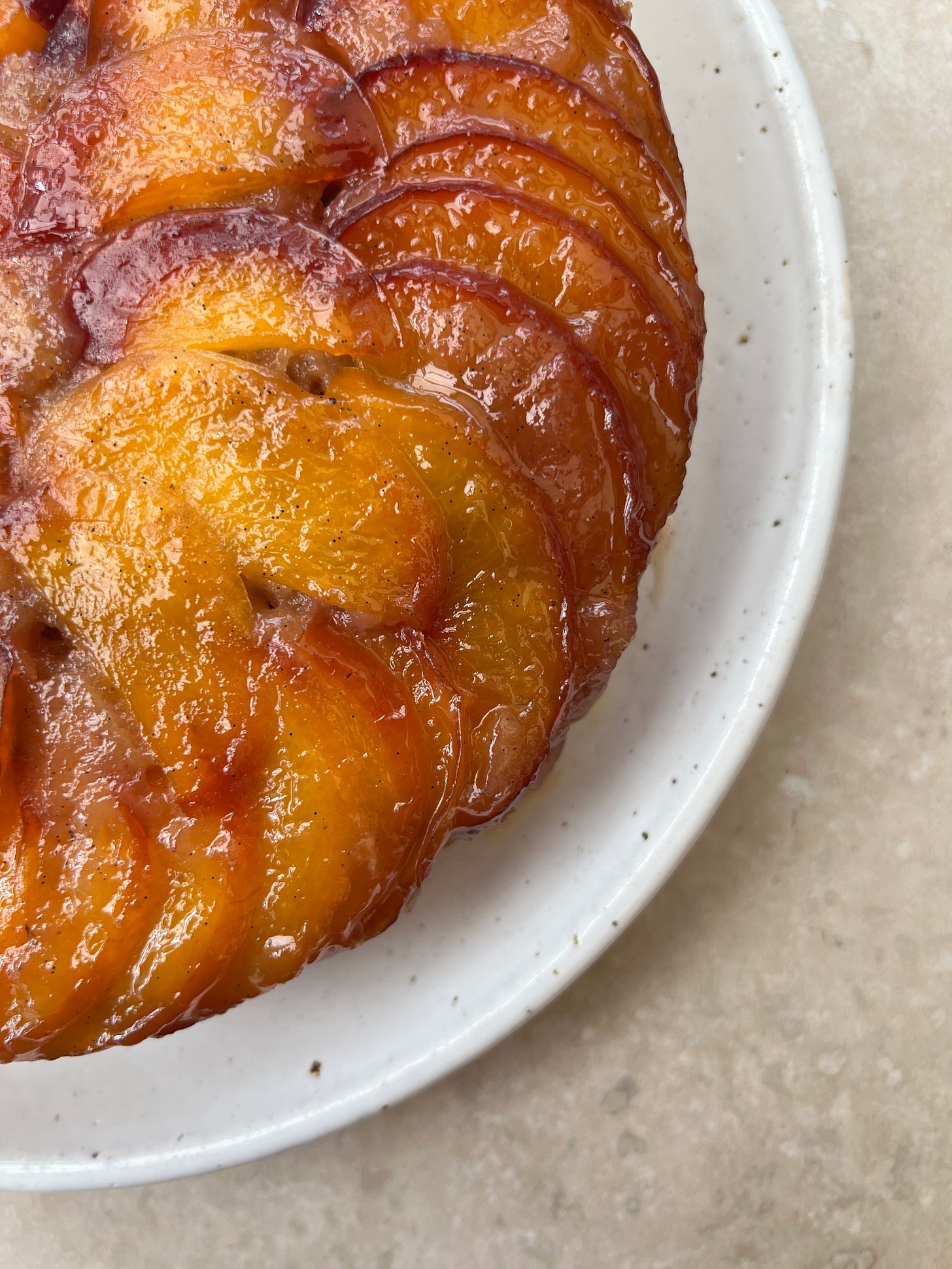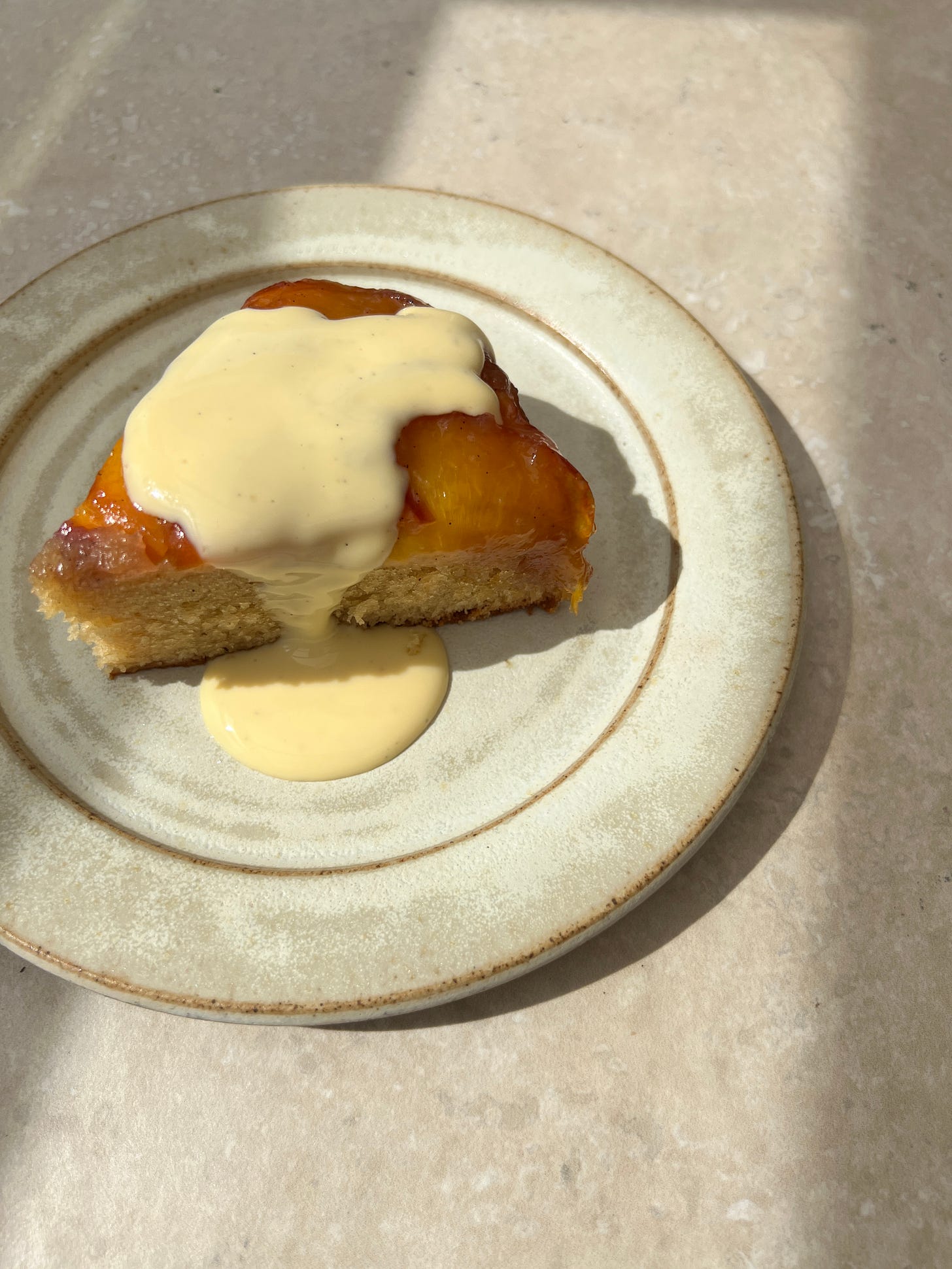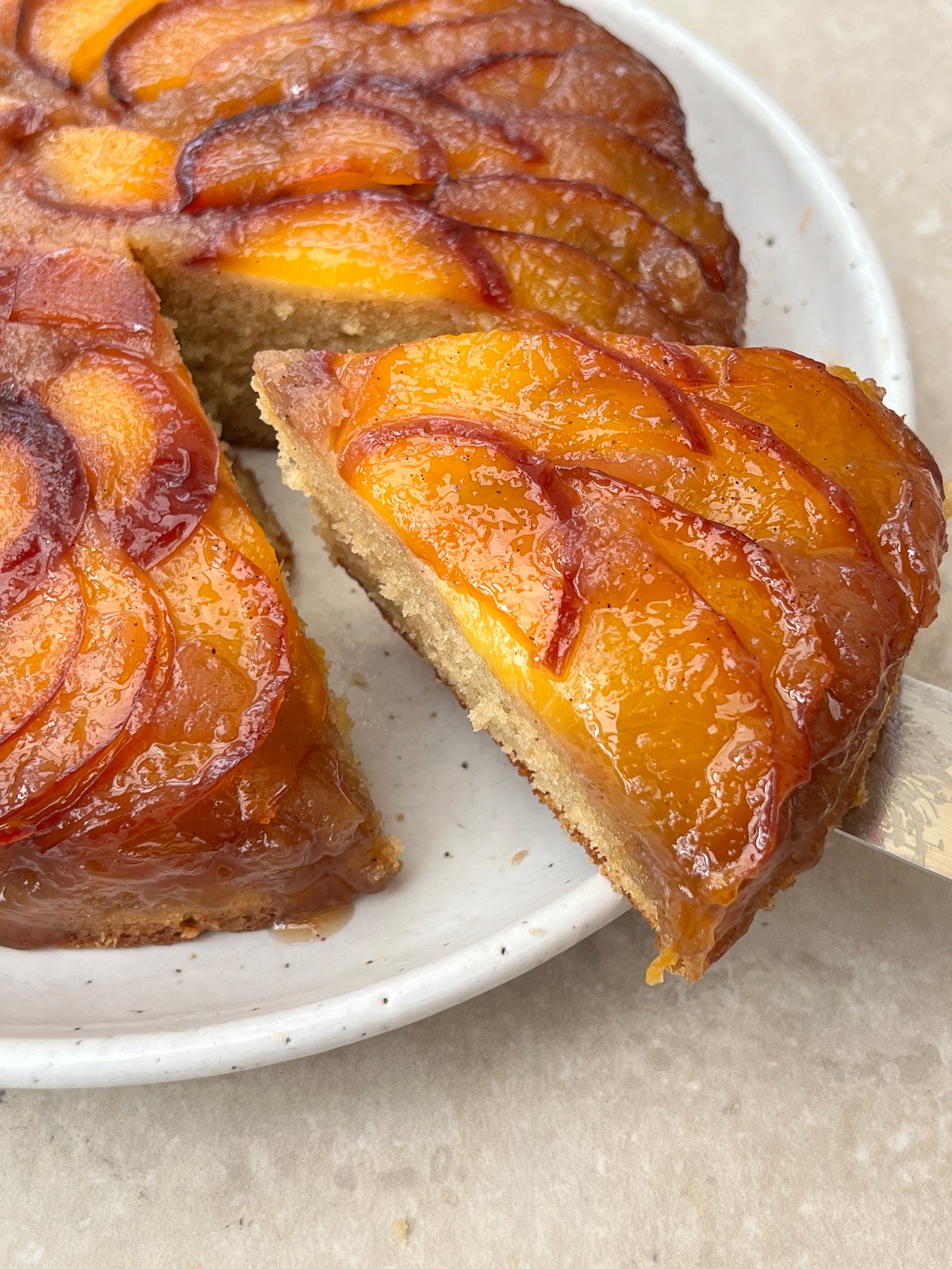🎉 Welcome to my newsletter, The Boy Who Bakes, a subscriber-supported newsletter, dedicated to all things baked. This is a post for paid subscribers, who receive exclusive weekly recipes. You can become a paid subscriber to get access to this recipe and every recipe moving forward plus you’ll also get access to the archive including every recipe posted on the newsletter. It costs just £5 a month and that helps me continue writting this newsletter. To subscribe, to either the paid or free newsletter, click the link below.🎉
I am an unashamed fan of all things naff and retro, so it's probably far from surprising that I love an upside-down cake, yes, including the classic pineapple version with the addition of bright pink cherries. Don’t worry though; today’s version is a little less retro and actually quite sophisticated-looking. This week's recipe is for a simple brown sugar peach upside-down cake, although really it should probably be called brown sugar peach and nectarine upside-down cake, but that didn't have quite the same ring to it. This cake is basically my go-to formula for making upside-down cakes, so you can actually use this for all manner of flavours, simply switching out the fruit used.
For this version, I used mainly peaches, but with a little nectarine mixed in for good measure. The two fruits are so incredibly similar that it can be confusing telling the two apart; so what actually are the differences?
Peaches are the OG, a stone fruit that has been around for possibly thousands of years. Originating in China, the fruit slowly made its way west to the Roman Empire before spreading until it was popular all across Europe. American colonists took it with them across the Atlantic, and the resulting popularity in America is undeniable. China, however, remains both the biggest grower and consumer of peaches, producing 45% of the world's supply, which is compared with a relatively paltry 5% grown in the US. Nectarines also originated in China; originally a genetic mutation, this trait was valued, so the trait was encouraged and bred widely. This popularity eventually led to the smooth peach being classified as a new unique fruit, the nectarine. So other than the fuzz, or the lack thereof, are the two fruits basically different names for the same thing? Genetically, nectarines are identical to peaches, except for one gene that makes the fruit have smooth skin. Nectarines tend to be slightly smaller than peaches, plus the sugar and acidity content tends to be slightly higher, making them a little tangier than a classic peach. The differences seem small, so it’s safe to say; if a recipe calls for peaches, feel free to substitute with nectarines and vice versa.
When it comes to upside-down cakes, there are a few ways to achieve the tarte tatin-esque topping. I have seen recipes that spread butter in the pan and sprinkle over brown sugar, recipes that make a classic wet caramel and pour this directly over the fruit; my version is somewhere in the middle. My topping is made with a combination of brown sugar and butter, cooked together briefly to make a quick butterscotch-like sauce. This bubbling mixture is poured into the pan either first, so that the fruit sits on top of the caramel, or second, so that the butterscotch sauce is poured atop the fruit. Once in the oven, the caramel seeps under the fruit, so the decision of when to add the caramel is basically moot.
The cake element is about as simple as it can get. In its original form, I used this recipe as an all-in-one style cake; simply put, all the ingredients are added to a bowl at the same time and stirred together until a batter is formed. This style of cake relies on two things: firstly, it relies on chemical leavening for rise, and secondly, it relies on very soft butter. Because the butter is not creamed together with sugar, the lift in the cake comes almost entirely from baking powder, and to make a cake that isn’t lumpy, the butter must be incredibly soft, almost melted. While this method works well, I actually prefer to make it the old-fashioned way, using the creaming method. You may notice that the cake has a relatively low sugar/butter ratio (the fat in the cake comes also from the sour cream). The relatively low level of butter means that it doesn’t cream quite the same as when the sugar and butter levels are similar; it takes the power of an electric mixer to get some air creamed into the butter, and it also takes a little bit longer to achieve a butter mixture that is lightened in colour and full of air. Whichever method you choose, the cake that comes out is simple but tender and infused with the butterscotch flavour of brown sugar and vanilla, the peach flavour being a perfect pairing and counterpoint to the warm flavours of the cake and the caramel topping.
Keep reading with a 7-day free trial
Subscribe to The Boy Who Bakes to keep reading this post and get 7 days of free access to the full post archives.






